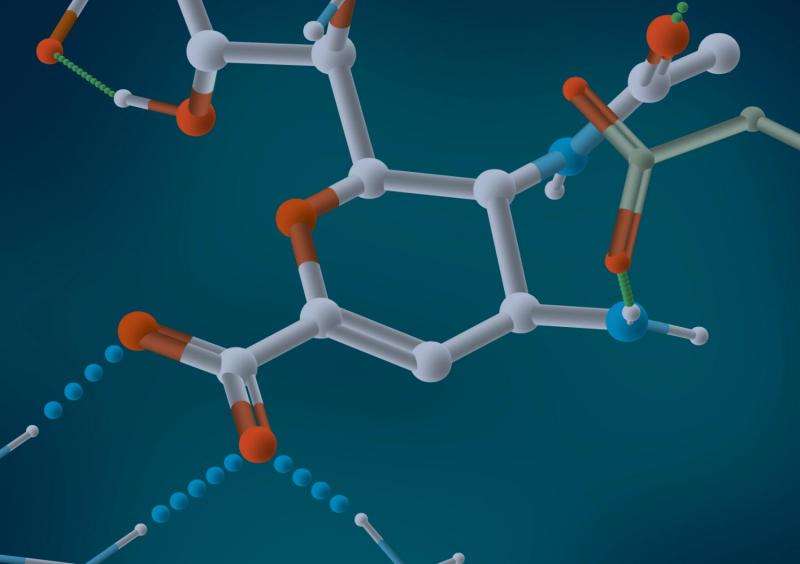Scientists distinguish molecules capable of fighting prostate cancer

Scientists from MIPT (Moscow Institute of Physics and Technology), MSU (Moscow State University), the Skolkovo Institute of Science and Technology (Skoltech) and National University of Science and Technology (MISIS) have published an overview of the most promising compounds that can be used as medications for prostate cancer in the Journal of Drug Targeting.
Researchers have identified 11 promising compounds. The substances are currently in clinical trials, having demonstrated the necessary characteristics at the stage of preclinical studies.
Sometimes researchers spend more than 10 years developing a new registered drug from a promising molecule. Initially, the scientists test the substance on cell cultures—this gives them a chance to prove that it can actually slow or stop tumor growth. After that, they conduct tests on animals—it is necessary to filter out substances that are effective only in vitro. Then they perform clinical trials. At the first stage, they are only testing for safety, not effectiveness, and whether or not the potential drug reaches the target.
Prostate cancer is one of the most common cancers in men. Today, the majority of anti-cancer therapies are not selective enough and may have a detrimental effect on healthy cells as well as cancer cells. Iit is important to develop drugs that attack cancer cells exclusively, to increase the effectiveness of treatment and reduce the negative impact of therapy on the body as a whole. However, to ensure the drug selectivity, the scientists need a target known as a cancer marker.
The well-known marker for prostate cancer is PSA (prostate specific antigen), which is already used in medicine for the diagnosis of prostate cancer. However, for a number of reasons, PSA is considered as an insufficiently precise target. A promising alternative for the diagnosis and treatment of prostate cancer is PSMA (prostate-specific membrane antigen). In the case of cancer, prostate tissues contain almost 10 times as many of these markers as healthy tissues of the prostate gland. Also, diagnosis by means of this marker can detect the tiniest metastases (secondary distant tumors).
"PSMA is one of the most promising biological targets for the development of new hybrids of selective PSMA ligands with antitumor medicinal substances or molecular diagnostic tools for their targeted delivery to the site of the disease—particularly in the case of prostate cancer," says Yan Andreevich Ivanenkov, Ph.D., head of the Laboratory of Medical Chemistry and Bioinformatics, and a lecturer at MIPT.
Biocatalyst and target
PSMA catalyzes the hydrolysis of N-acetylaspartylglutamate into N-acetylaspartate and glutamate. This precise PSMA function was taken into account in order to compile a list of the most promising substances, which form the basis of drugs used for the treatment of prostate cancer.
As the authors of the review article state, all molecules capable of binding to PSMA can be divided into three groups: antibodies, aptamers, and ligands.
Antibodies are proteins synthesized by the immune system. Aptamers are peptide molecules or fragments of DNA/RNA, capable of selectively binding to specific target molecules. Ligands are substances that interact with the biocatalist, engaging in direct interaction with its active center. Comparing all three groups, the researchers concluded that ligands are the most promising group. Ligands, in this case, are molecules the size and weight of which are most suitable for synthesizing. Besides, they also have good pharmacokinetic parameters.
From phosphorus to urea and its derivatives
Scientists around the world have been searching for ligands compatible with PSMA since the 1990s. Phosphorus compounds were among the first ligands of PSMA, and showed high efficacy on cancer cells. However, their pharmacokinetic parameters were insufficient for the conduct of clinical trials.
Later, compounds with -SH groups have become alternatives to phosphorus-containing chemicals. They demonstrate high bioavailability when orally administered, and they better penetrate the cell membrane. However, these drugs have insufficient selectivity and metabolic stability. That is, they adversely affected healthy cells. They also mutated in the course of biochemical reactions in the body.
New classes of ligands needed to be free of the deficiencies of their predecessors. The next candidates for treating prostate cancer were the compounds based on urea. Currently, these are the most widely studied type of PSMA ligands.
"It is impossible to give a precise answer to the question of how soon PSMA ligands will appear in the clinic. On average, the development of a new medication can take up to 10 years. Currently, these molecules (as potential drugs for the diagnosis of prostate cancer) are in the first and second phases of clinical trials. However, the fact that the PSMA diagnostics allows the monitoring of tumor growth and development of metastasis makes this an attractive target for future developments of drugs. The first results are already there, and they are very promising," Anastasia Aladinskaya, an employee of the Laboratory of Medical Chemistry and Bioinformatics, concludes.
More information: Small-molecule PSMA ligands. Current state, SAR and perspectives. J Drug Target. 2016 Mar 10:1-15. [Epub ahead of print]. www.ncbi.nlm.nih.gov/pubmed/26887438















